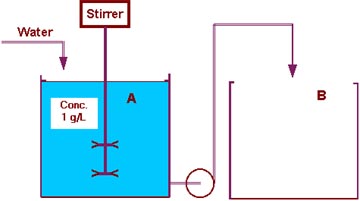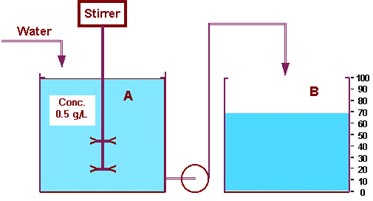If one is interested in a special dilution factor, such as 2 or 5 or 10,
rather than in factors like 2.72 (e1) or 7.39 (e2),
a search for the right exponent of the base e will help.
The exponent will no longer be an integer but will become a fraction.

The result of a search for the right exponent of the base e
is called "logarithmus naturalis" (ln). The attribute "naturalis"
shows its connection with natural processes.
In a visualized form the logarithmus naturalis of the dilution factor
corresponds to the amount of water in the overflow vessel(s),
expressed in terms of vessel units.
This is demonstrated for a dilution factor of 2.00 in the following figures:
|





